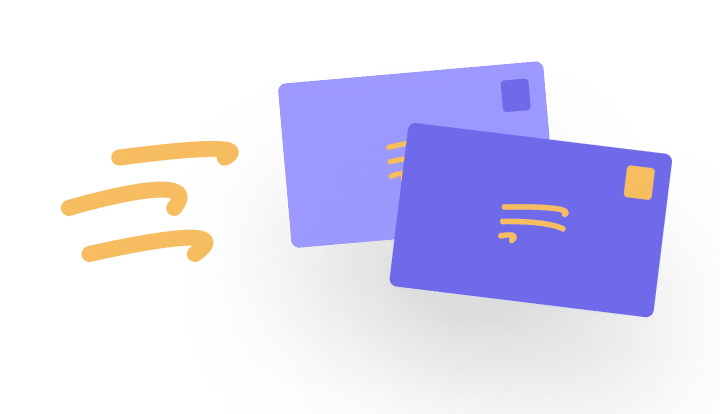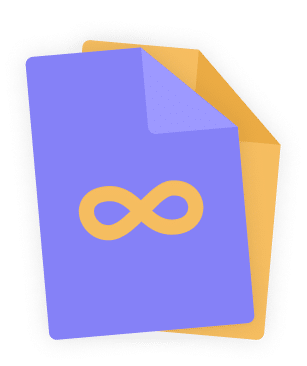Let’s say you’ve been at your current UX job for a while. A lot has changed, and now you’re looking to earn a bit more. Here’s how to make more money as a UX designer.
- Updated on June 8, 2023

Table of Contents
Looking at what I’ve done to earn more as a UX designer myself, the main thing I can recommend is to freelance on the side. It has helped me supplement my income tremendously.
Freelancing as a UX designer mostly comes with advantages and, in my experience, only very few drawbacks. In this article, we’ll review these advantages and their drawbacks. Then, we’ll find a way for you to make more money as a UX designer that suits you.
A step-by-step approach to earning more money as a UX designer
If you want to earn more as a UX designer, freelancing on the side is one of your best bets. It can be risky, though, so there are other options, like looking for a new job or negotiating a raise at your current job, as well.
| Method | Risk | Reward |
|---|---|---|
| Freelancing on the side | High | High |
| Changing jobs | Medium | Medium |
| Negotiating a raise | Low | Low |
As you can see in the table above, freelancing is the way to go if you want to make the biggest jump in income. However, if you don’t like the risk, try and go for the raise at your current job.
I’ll explain all three options in more detail and add some tips based on my personal experience of trying all three throughout my career.
Freelancing on the side
Your first option is to start a UX freelancing business in addition to your regular job. With a stable income from your day job, you can try this out without risk.
As a result, you can find what works for you as a freelancer. For example, you could sell icon sets, web design, or something else that’s related to UX. There’s no pressure for you to perform right away.
How to start freelancing as a UX designer
To start freelancing as a UX designer, you first have to find out what you like to do as a freelancer. It will probably be similar to what you do in your day job.
For example, if you are a UI and UX designer, you can do something similar as a freelancer. However, you can add related activities like icon design or web design if that’s something you like.
Start by reaching out to companies in your area. For example, Local coffee shops and restaurants also need good-looking websites or a new logo.
So, how to get started? Let’s assume you work 40 hours a week at your day job. That’s 100%. If your situation allows, you give away 10% of your salary. That means that you have 4 hours to work as a UX freelancer.
Your hourly rate as a UX designer is likely to be higher than what you make during the day, so if you can fill those 4 hours with freelancing work, you will make more money than you did before.
What if you don’t want to freelance? I get that. There are drawbacks to being a freelance UX designer. For example, you have to keep finding new clients, which can be pretty stressful. Here’s an alternative.
Earn a raise at your current job
Another much less risky way of earning more money is to do well at your current job and negotiate a raise at the end of the year. If that’s the way to go for you, that’s fine too. And here’s how to do it.
Ask one of your stakeholders for a testimonial whenever you finish a project. See if they want to write something nice about you and collect a few of those throughout the year.
At the end of the year, you can present your results to your manager and ask for a raise. If you work at a large corporation, there’s probably a year-end review process you can use to make your case.
At smaller companies, it is up to you to make your case.
How to make a case for your raise
When you negotiate for a raise, focus on what your employer values. Instead of only mentioning what design-related things you’ve done, also mention the business benefits that came with it.
For example, if you helped a client understand the value of design thinking, also mention that this triggered an interest in more design thinking projects for your employer.
You’re not only an awesome designer, but you also know how to sell projects. That’s what’s getting you a raise.
So always focus on what it brings to the user. In this case, your employer is the ‘user.’
Looking for a new job
Getting a raise at your current job will get you a lower raise compared to freelancing. However, there’s a middle ground in terms of risk and the amount of extra money you can earn.
You’ll probably get a raise between 0% and 5% at your current job. Anything higher than that is an exception. So if you want to make a bigger jump in salary, the best thing to do is get a new job in UX.
Since you’ve joined your current job, the market has likely changed.
UX is in demand, and as a result, you can maybe get a 10% or 15% raise if you go work somewhere else.
However, moving jobs can be stressful as well. You’re giving up a contract and your favorite coworkers for a new job that might not be as good as it seems. So take your time to consider your next move.
Summary
There are three ways to make more money as a UX designer. Each has different rewards as well as a risk level. Choose one based on the amount of risk you want to take. Here’s an overview.
- The first way to make more money as a UX designer is to freelance on the side. You can slowly increase your number of freelance hours while decreasing the number of in-house hours. This is a high-risk and high-reward approach.
- The next way to make more money is with a medium risk and a medium reward. I’m talking about changing jobs. It will get you a bigger salary increase compared to the raise you can get at your company. However, you do have to find another job which could cause you uncertainty and doubt.
- Finally, you have the low-risk and low-reward way of making more money, and that’s by doing well at your current job. It is easier to do than the others, but your raise will be lower too. Focus on getting testimonials from your projects and use those in your negotiation at the end of the year to get that raise.

About the author
Hi! I'm Nick Groeneveld, a senior designer from the Netherlands with experience in UX, visual design, and research. I'm a UX coach that supports other designers and have completed design projects in finance, tech, and the public sector.
☎️ Book a 1:1 mentor meeting or let's connect on LinkedIn and Twitter.



